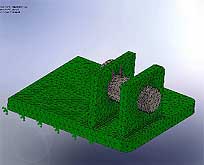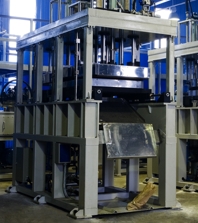|
 |
Services - finite element analysis (FEA)Finite element analysis (FEA) is a powerful tool for understanding
the limitations of mechanical designs. In the right hands it
can quickly identify problems, show where designs can be improved,
save weight and reduce cost. It can provide the information
for fatigue, creep and lifing predictions. Our consultants have
been providing FEA solutions to our clients since 1997. FEA is quicker and more accurate than hand calculations in
all but the simplest cases. It handles complicated assemblies
and loads, large deflections and contacting parts. It must be
used with care though, because assumptions often have to be
made about the loads and supports (boundary conditions) and
how to simplify complicated geometry. Our consultants often
use hand calculations to check that the FEA results are reasonable
and expected. Experienced FEA practitioners also use various
standard checks to make sure the model is performing correctly. FEA is often used in combination with appropriate design standards.
We use various BS EN, ISO, ASME and other standards – see the
case study files for more details. Our consultants use FEA extensively as a tool to find the best
strategy for tackling a new design problem, including evaluating
different materials and approaches. Once an outline design has
been agreed, our consultants use FEA to optimise it. This saves
the cost and time of making several prototypes. Many of our
clients have saved considerable amounts or gained a market advantage
in this way. Our consultants FEA work includes:
|
Enquiry Form |
|
|
|
|
© Copyright 2016 ; Coupland Bell Ltd. | All rights reserved. Finite Element Analysis Consultants UK. |



